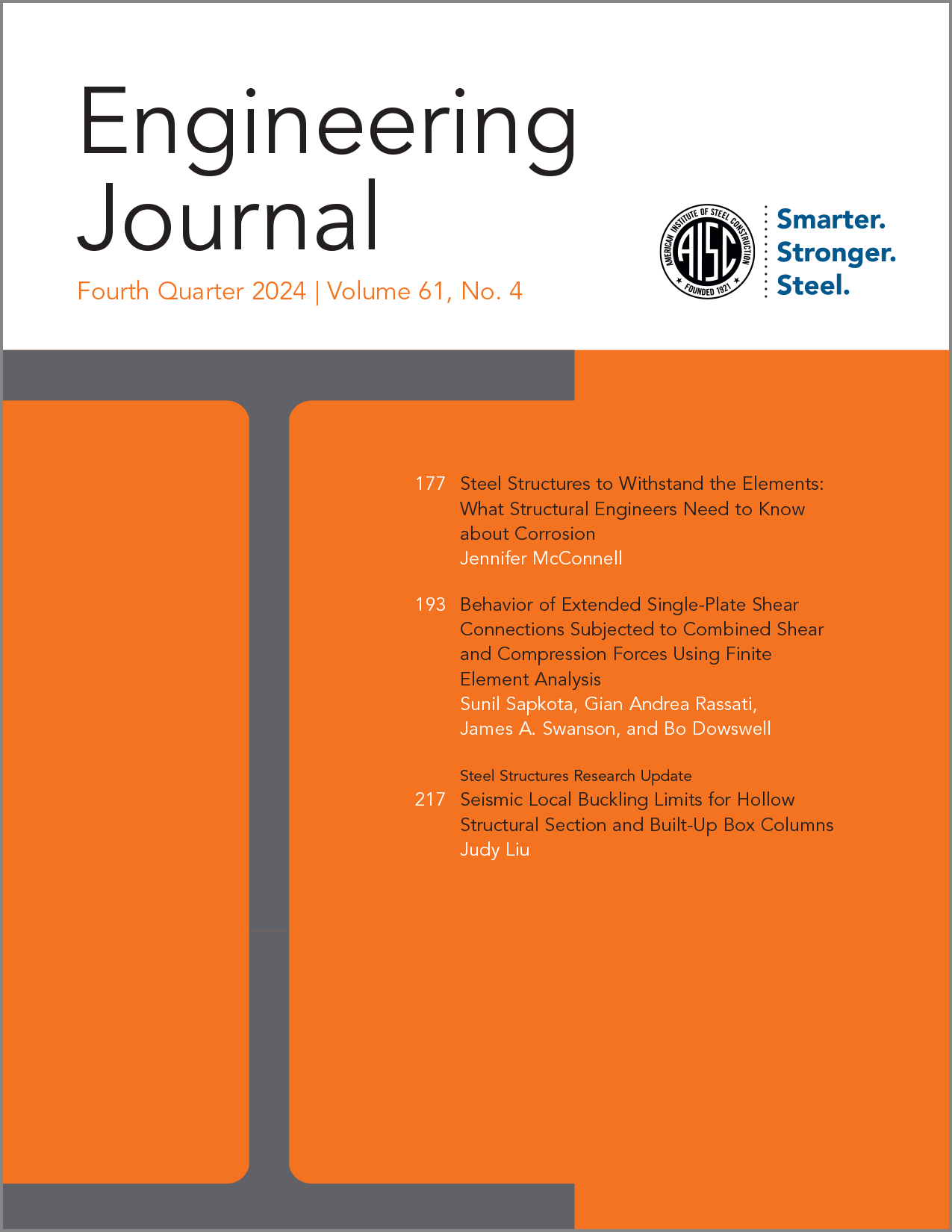Steel Structures to Withstand the Elements: What Structural Engineers Need to Know about Corrosion
DOI:
https://doi.org/10.62913/engj.v61i4.1331Keywords:
corrosion, corrosion resistance, uncoated weathering steelAbstract
While regimented design processes for load-induced effects in structures are ubiquitous, similar design processes for considering corrosion resistance are lacking. This is a critical gap in the structural engineering profession as material degradation is the most common cause of diminishing structural condition for bridges and other infrastructure exposed to the elements. This results in both safety and financial consequences. This paper addresses this gap by reviewing basic principles governing corrosion, how these corrosion principles translate to real-world environments, commonly available corrosion protection systems, long-term field data assessing corrosion in varied quantified environments and associated conclusions, and practical design and maintenance strategies for improving corrosion resistance. These concepts are connected through a proposed framework for considering corrosion as a limit state that can be applied to all structures. Detailed consideration of uncoated weathering steel (UWS) bridges is provided as a pilot material and structure type for considering corrosion as a limit state. Thoughtful application of these concepts can be used to optimize corrosion resistance, improving life-cycle costs and service lives of civil engineering structures.

